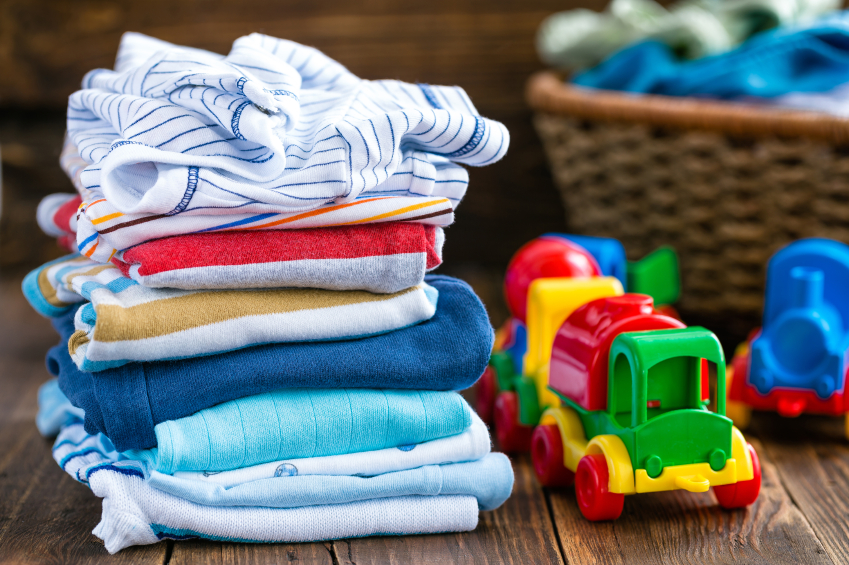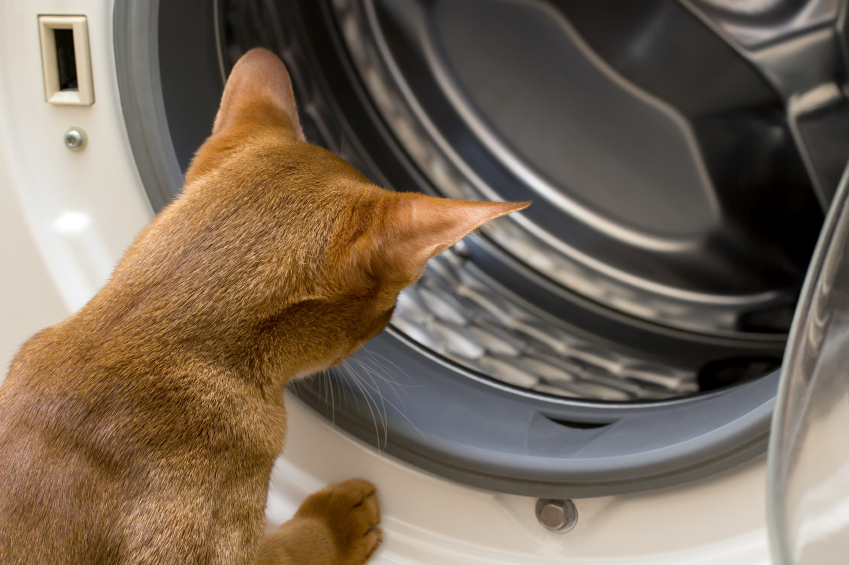It is incredible how many things just lying around almost any kitchen have marvelous uses besides cooking! In fact, stuff such as lemon peels, baking soda, toothpaste, and now vinegar have fab cleaning properties, which make them perfect for cleaning and disinfecting!
Here is what you can do with distilled (white) vinegar in the laundry, and not only!
1. Brighten your Clothes
Add ½ a cup of vinegar to the final rinse and expect brighter colors and whiter clothes. Don’t be afraid to use vinegar for that purpose because the acetic acid in it doesn’t harm fabrics (unless very delicate and dry- or hand-wash only) but is very effective in dissolving soapy residues. That aside, vinegar’s components also allow it to act as a whitener for dingy clothes. To remember how white your socks used to be, add a cup of vinegar to a pot of water and heat to bring to a boil. Then add the pieces of clothing you want brightened and let them soak overnight. In the morning, launder as you usually and make sure you wear your sunglasses because your grays will become super-white!
For those with an automatic dispenser, just add vinegar at the beginning of the rinse cycle or directly to the fabric softener dispenser.
Important Note: Only use with clothes made from cotton (100%).
2. Get Rid of Odors
Places such as the bathroom or wherever else you keep your washer or leave your wet clothing in a hamper for a while before you throw them in the dryer, usually have a moldy smell. This is because mildew is created. However, if you add a 1-2 cups of white vinegar during the wash cycle will help eliminate the nasty odors (including cigar and cigarette smoke odors) and give a sense of freshness to the air. Once the wash cycle is complete, you can add the detergent and continue with the normal cycle.
Tip: If your clothes are dry clean only and hold foul smells, fill your bathtub with hot water. Add a cup of white vinegar and hang the pieces above. The steam released will penetrate their fibers, eliminating odors. Just make sure you close the door so steam can do wonders for long.
You can also do the same to remove perspiration odors and underarm stains. Only, in this case, you spray the area with vinegar to prevent discoloration (yellowing) and cut through any deodorant residue and then toss the item into the washer.
3. Soften the Clothes
If you run out of Lenor or Snuggle, no worries. Add half a cup of white vinegar to the final rinse cycle and you will notice that the fabrics will feel soft to the touch without being heavily scented. This trick is particularly handy for people with asthma, allergies or a sensitive nose! Plus, adding vinegar in the washer will also remove residues from the machine itself (see #4).
Tip: If you want to give your clothes a light scent, add a few drops of your favorite essential oil in the cup of vinegar.
4. Clean your Washing Machine
We have all seen what mineral deposits can do to a washer. How many of you had to spend a small fortune to fix a damaged drum? All that trouble and extra costs would have been prevented if you run an empty cycle with hot water and some white vinegar (2 cups will do). The vinegar will clean the hoses and remove soap scum buildup, allowing water to flow unobstructed. This will dramatically improve your washing machine’s performance.
Tip: If you have a fabric softener dispenser, then just fill it with vinegar and then run the empty cycle!
5. Clean your Iron
Many of us don’t always use distilled water when ironing. As a result, the spray nozzles and steam vents get clogged because of mineral deposits. If you have gotten that far and are a step before throwing the iron away, try filling the water tank with a solution of water and white vinegar in equal parts. Select a heatproof surface and let the iron steam (always in an upright position) for a few minutes (4-5 mins should be enough). Empty the tank when the iron is cool, rinse with plenty of water and refill. Iron some old rugs to get rid of any residue. When the steam comes out clean, you are ready to use on the clothes you wear.
Tip: If you notice any scorch marks on the faceplate of your iron, make a solution of vinegar and salt (equal parts) and warm it. Dampen a cloth with the solution and wipe the faceplate with it.
6. Deodorize Drains
Speaking of unclogging things, white vinegar can also act as an excellent and very effective drain cleaner (and much cheaper than commercial products full of harmful chemicals, too). To unclog, wash away bacteria that cause odors, and deodorize your drains at the same time, pour half a cup of baking soda and a cup of white vinegar into the drain (use a funnel). You will notice that their combination will create foam. Once that foam settles down, flush with lots of hot water. Give it 4-5 minutes and then re-flush, only with cold water this time.
7. Clean the Air
Kitchens are places where the entire family spend much time every day. What better way to share your news than over dinner? Sometimes, though, and as much as we love cabbage, the smells that linger for hours and hours are just impossible to bear. To clean the air, make a solution of one cup of water and half a cup of white vinegar in a pot and bring to a boil. As soon as the liquid is evaporated, your breathing will be much better!
Other Uses of Vinegar:
Reduce Pet Hair – Pour half a cup of white vinegar in the rinse cycle to prevent pet hair from clinging to the fabrics. The same goes for lint hair, too.
Make a scrub for metal cookware – Combine flour and salt (equal parts) and just enough vinegar to make a paste. Scrub the utensils with it and rinse off with warm water. Make sure you dry well with a soft cloth.
Erase Hem Lines – If you have ever had to let down your kids pants, then you know that the whole process leaves tiny holes along the hemline. To make them disappear, dampen a white cloth with white vinegar and place it under the fabric. Iron the cloth (you can add another cloth on top if you are afraid of scorching the fabric) and see what happens!


